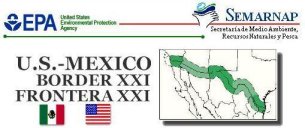Creating New Regions in the U.S.
|
Many Congressmen and Senators say they don't know anything about the North American Union and they don't understand how private groups are pushing for the international transportation corridors without congressional approval. For many of them, it could possibly be true because the Clinton-Gore 'reinvention of government' actually implemented a distinctly un-American form of 'governance'. There are two main strategies to this un-American system of 'governance'. Regionalism is the first. It cannibalizes existing elected representative government by distributing power among 'regional authorities' which are for the most part, unelected boards, councils and commissions. The use of public-private partnerships is the second. The public side of the deal uses the power of government to implement the private agenda. Grant money is used as the incentive. The private agenda can be the international agenda of the United Nations as in the case of Agenda 21 or it can be for commercial interests as in the case of the International Corridors. The following section is a glimpse at how these strategies are working - In 1993, President Bill Clinton signed Executive Order 12852 calling for a commission to be established to oversee the implementation of Agenda 21 in the United States. The Executive Order doesn't specifically name United Nations Agenda 21. Rather, it calls for implementation of 'sustainable development' which is what Agenda 21 is about. Because this label means nothing, it can be defined to mean anything - depending upon the goals of the moment. As you can see from the Goals of Clinton's Commission (below, right), their definition was to includes every aspect of life (same as Agenda 21). In effect, this Executive Order established the principle of central planning for life in the United States to be promoted and implemented by non-governmental organizations (NGO's). This is the 'New Federalism' implemented by Clinton and Gore in the 'reinvention of government' program. |
||
|
Recall that the ostensible purpose behind the La Paz Agreement with Mexico was to address the common environmental issues of the border region but it was written to allow open-ended expansion. And the EPA was the lead governmental body to lead the effort on the U.S. side. In 1996, the expansive elements of the La Paz agreement became evident when the EPA published the Border XXI framework to implement Agenda 21 in the Border Region building on the La Paz Agreement.
Also in 1996, the EPA formed the 'Smart Growth Network'
In 1998, the EPA's Sustainable Development Challenge Grant Program announced a solicitation for proposals. [Federal Register: August 24, 1998 (Volume 63, Number 163)] [Page 45155-45161]
1999 HUD Budget includes $100 million for 'Regional Connections Initiative' and the number of Empowerment and Enterprise zones are increased.
On May 25, 1999, Clinton signed Executive Order 13122, "Southwest Border Economic Development Initiative". This order expanded the border region to 150 miles on each side of the border and it called for the creation of an 'Intergovernmental Task Force on the Economic Development of the Southwest Border'.
|
"In 1992
leaders at the Earth Summit built upon
the framework of Brundtland Report to
create agreements and conventions on
critical issues such as climate change,
desertification and deforestation. They
also drafted a broad action
strategy—Agenda 21—as the workplan for
environment and development issues for
the coming decades."
Goal
1: Health And The Environment
Goal 2: Economic Prosperity
Goal 3: Equity
Goal 4: Conservation Of Nature
Goal 5: Stewardship
Goal 6: Sustainable Communities
Goal 7: Civic Engagement Goal
8: Population Goal
9: International Responsibility
Goal
10: Education
|
|
|
That statement in the Fact Sheet on the purpose of the initiative combined the Southwest Border Region Initiative with the redevelopment program for the rest of the U.S. which was based on the definition of 'regional zones'. History of Federal Empowerment Zones
On November 15, 1999, the Intergovernmental Task Force called for in EO 13122 published an interim status status report that clearly describes the intent of 'empowerment zones'. On page (5 text: 17).
Foreign Trade Zones Report, September 30, 2000
The following link concerns a story of how regionalism was brought to Boise, Idaho and surrounding cities and counties. The events in the timeline correspond directly to the above strategic positioning for the 'transformation' to the un-American system of 'governance'.
|
||

